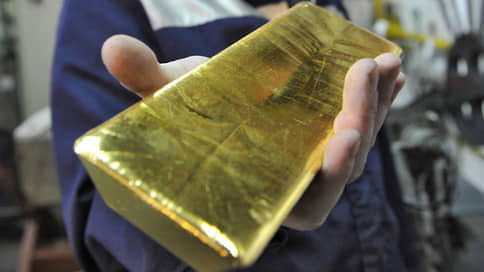It didn’t rust for gold – Newspaper Kommersant No. 5 (7450) of 01/13/2023
[ad_1]

The cost of gold on the world market after an eight-month break rose above $1.9 thousand per ounce. Quotes have been growing steadily since the beginning of the year, while the cost of other precious metals remains stable. This is largely due to the investment nature of gold, for which demand has grown amid lower expectations of a sharp rise in the Fed’s rate. Prices are also supported by the record demand for the precious metal from the central banks of developing countries.
The cost of gold on the world spot market on January 12 for the first time in eight months rose above the level of $1.9 thousand per troy ounce. According to Investing.com, during trading, quotes reached $1,901.69 per ounce, the highest since May 5, 2022. The quotes failed to stay above the round mark, and by 19:00 the price dropped to $1891 per ounce. However, even taking into account the correction since the beginning of the year, gold has risen in price by 3.7%.
The growth of gold quotes is taking place against the backdrop of a less stable movement in the prices of other precious metals. Thus, the cost of silver reached $23.75 per ounce, which is 1% lower than the values of the end of December. Platinum fell 0.15% to $1,068.3 an ounce, while palladium lost 0.8% to $1,778.3 an ounce.
The update of the multi-month high for gold occurred against the background of the weakening of the US currency.
On Thursday, the DXY index (the dollar exchange rate against the six leading world currencies) fell to a seven-month low of 102.32 points, which is 0.7% lower than Wednesday’s values.
The depreciation of the US currency comes against the backdrop of the publication of data on inflation in the US, which reduced the likelihood of further aggressive tightening of the Fed’s monetary policy.
However, interest in gold supports high geopolitical risks. According to Irina Prokhorova, portfolio manager at Otkritie Management Company, they led to record demand from central banks for the precious metal, which may indicate an acceleration in the process of the dollar losing its status as the world’s exclusive reserve currency. According to the World Gold Council (WGC), in November, the world’s central banks bought almost 50 tons of metal in reserves.
Quotations of other precious metals lag behind the dynamics of gold prices due to a higher share of industrial demand, which is suffering against the backdrop of a slowing growth in the global economy.
The World Bank sharply worsened its forecast for global economic growth in 2023 to 1.7%, which is almost half the forecast six months ago. “Palladium, platinum and silver are being hit harder by the global recession. In this sense, gold is better protected: jewelry is bought regardless of crises,” notes Valery Yemelyanov, an expert on the stock market at BCS World of Investments.
Under the current conditions, the discrepancy in the prices of precious metals will continue, market participants believe. “The observed decline in new orders in key economic regions indicates that a recession is approaching. At the same time, an increase in the share of global unprofitable supply (due to high inflation of production costs) may lead to the fact that the structure of supply and demand will begin to influence the price of the metal, which may exceed $2,000 per ounce this year,”— Irina Prokhorova believes.
“So far we see a steady upward trend,” says Alexander Tsyganov, director of the investment and corporate business department at Tsifra Broker. Further movement of quotes, he said, will depend on US statistics, inflation, in general, on the indicators of the US and world economy.
[ad_2]
Source link





